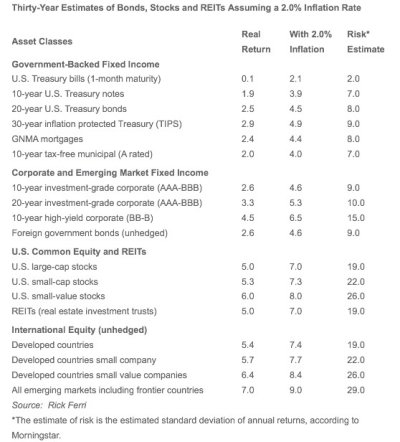Midpack
Give me a museum and I'll fill it. (Picasso) Give me a forum ...
Not suggesting this is best or only, but FWIW. He does this annually.
Portfolio Solutions’ 30-Year Market Forecast for Investment Planning (2014 Edition)
Portfolio Solutions’ 30-Year Market Forecast for Investment Planning (2014 Edition)


